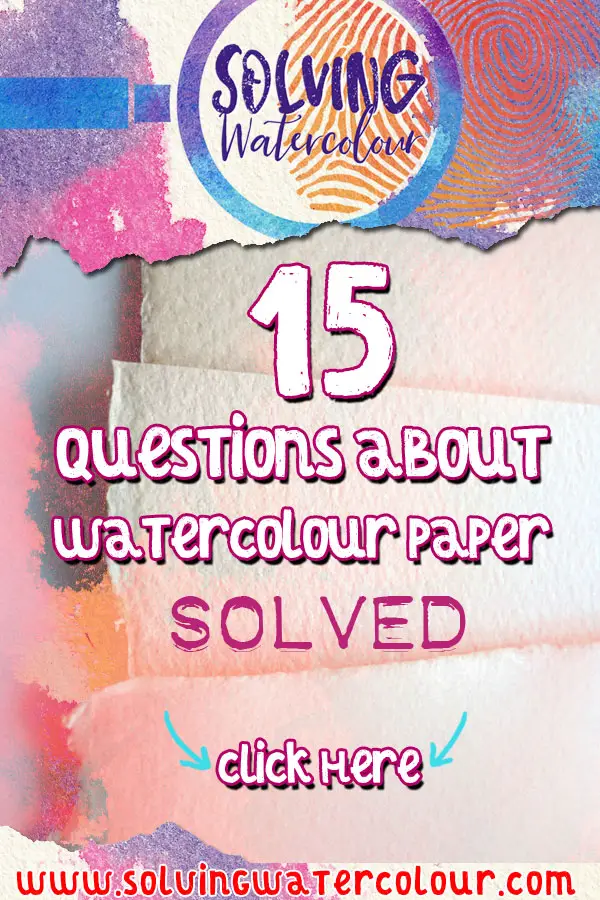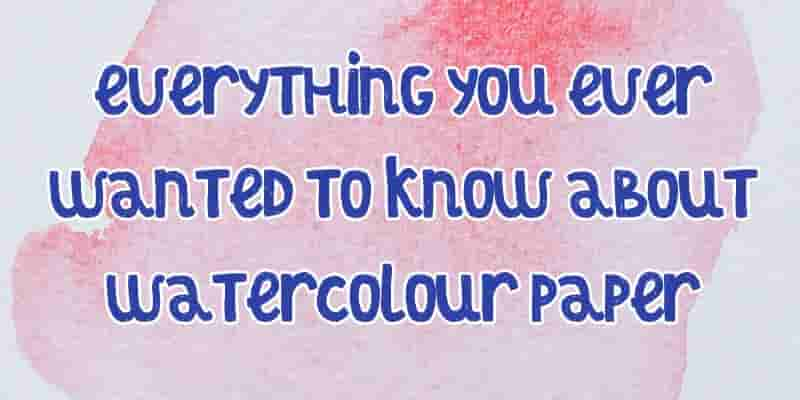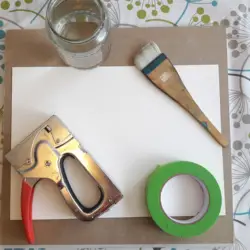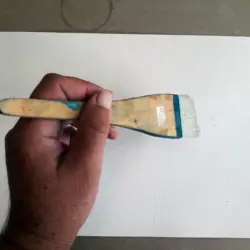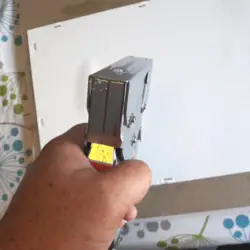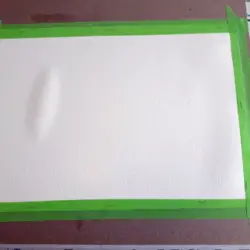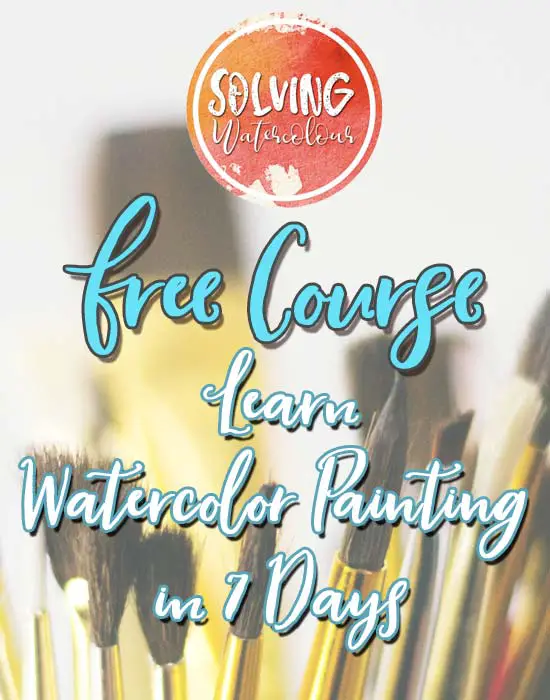Should I Buy Cheap Watercolor Paper?
There’s a simple answer to this question. No, you shouldn’t buy cheap watercolor paper. Cheap paper is a false economy as it will never give you great results. In this post I’ll discuss how you can minimize the cost of buying paper while maximizing the use you get from it.
- Should I Buy Cheap Watercolor Paper?
- How Is Watercolor Paper Made And Why Is It so Expensive?
- Is It Cheaper To buy Sheets, Pads, Rolls, or Blocks?
- Is Watercolor Paper Vegan?
- Is There a less expensive Paper To Use For Watercolor Practice?
- 100% Cotton Paper Vs Cellulose Wood Pulp Paper
- What Are The Different Types Of Watercolor Paper ?
- Which Thickness (Weight) of Watercolor Paper is the best?
- How Do I Prevent Watercolor Paper From Buckling?
- Can Watercolor Paper Be Ironed Flat?
- Does It Matter Which Side Of The Paper I Paint On?
- Can I print On Watercolor Paper?
- Can Watercolor Paper "Go Bad"?
- Could I Use Other Kinds Of Paper For Watercolor Painting?
- Which Are the Best Watercolor Paper Brands?
When I was just getting started with watercolor. One of the first things I did was to go online and buy some good quality paints by Winsor & Newton and a big pile of the cheapest watercolor paper I could find. It seemed like a sensible decision, I knew I was going to end up wasting a lot of paper but good quality watercolor paint goes a long way. So it seemed to make sense to budget my spending in that way.
The thing was, after several frustrating months, I hadn’t produced even a half decent painting and I was about to give up. I couldn’t understand why the paint looked so dull and refused to behave like it did in the YouTube videos I watched. Plot twist. It was the paper! The paper looked and felt like watercolor paper but was actually just machine textured, unsized wood pulp paper. It was never going to produce good results because the paint just sank straight into it and didn’t flow properly.
When I committed a bit of money to some good quality paper, my work started to improve immediately. That’s when I learned my lesson . Good quality paper is actually more important than good quality paint. Not that I would recommend using really cheap paint either. But using a student grade paint on a professional quality paper will produce much better results than the other way around.
How Is Watercolor Paper Made And Why Is It so Expensive?
The main reasons for the high cost of the best quality watercolor paper is due to the cost of the materials used and the time it takes to produce it. The best quality watercolor paper is made from 100% cotton.
The traditional method of making watercolor paper is as follows. Pulped cotton fibres are stored in a vat and poured onto flat frames, or mould made on cylindrical moulds. The paper is then rigorously quality checked for consistency.
The paper is treated with Sizing. The purpose of Sizing is to partially retard the water absorbency of the paper. The watercolor paint should not soak straight in like it did with the cheap paper I bought. The paint should sit on the surface for a while before slowly soaking in and drying.
Sizing allows time for the paint to be removed should you need to make corrections. Sizing can be “Surface” or “Internal”. As the names imply surface sizing is applied to the paper surface after moulding, whereas internal sizing is added to the pulp of fibres while they are still in the vat.
Is It Cheaper To buy Sheets, Pads, Rolls, or Blocks?
Full size sheets that you can cut down yourself are the most economical way of buying watercolor paper.
You can even use the sheets to make your own sketchbooks if you like.
There are other factors that you may wish to consider, before deciding what to buy.
Sketch pads and blocks are more convenient if you are travelling or painting Plein Air. Blocks, like pads, are easily portable and have the added convenience of being easily glued on all four sides, Thus minimising the amount of buckling. The downside to blocks is that you can only really work on one piece at a time.
Rolls allow you to work at larger sizes if that’s your preference.
Is Watercolor Paper Vegan?
The sizing used in Traditional watercolor paper manufacturing contains gelatin which is made from animal bones so, definitely not vegan. Some watercolor mamufacturers (Such as several of Fabriano’s non-traditional papers, Canson Heritage and Bockingford ) use a plant based sizing agent which contains no animal derivatives.
If this is a concern to you, it is worth checking with the paper manufacturer for specific details. Jacksons has a list of art supplies that are free of animal derivatives. https://www.jacksonsart.com/blog/2017/03/08/art-supplies-animal-ingredients/
Is There a less expensive Paper To Use For Watercolor Practice?
Yes, papers made from wood pulp are less expensive than 100% cotton papers and I do use them for practice. These are usually referred to as student grade papers and are machine made. I’ve tried and the quality of them can vary considerably. I only use them for practice because I find that the end result is unsatisfactory 70% of the time. There are several problems that I have found when working with wood pulp papers.
100% Cotton Paper Vs Cellulose Wood Pulp Paper
Strength: Wood pulp paper is not as strong and resilient as cotton paper. Therefore cotton paper can stand up to much heavier brushing and paint removal without tearing or pilling. You can literally scrub cotton paper under running water without tearing it. This is great if you need to lift out large areas of color without damaging the paper surface.
Absorbency: Wood pulp paper absorbs liquid at a much slower rate than cotton paper. Because Cotton paper can absorb and hold more water than wood pulp paper this means that wet into wet painting works much better on cotton paper as the paper stays moist for longer. Painting wet into wet on wood pulp paper is much more likely to result in ugly back runs.
For more on back runs and how to avoid them be sure to check out this post on Painting a perfect Flat wash
Color: It has been my experience that colors tend to retain their vibrancy much better on cotton paper.
Archiving: 100% cotton paper is naturally acid free. This means that your work will remain in good condition for longer and won’t deteriorate and turn yellow like wood pulp paper.
What Are The Different Types Of Watercolor Paper ?
There are three types of watercolor paper. Hot Pressed, Cold Pressed (NOT) and Rough
Hot Pressed is smooth and tends to be used for more realistic detailed work such as botanical painting. It’s not very suitable for dry brush work or any kind of loose brushwork. Hot pressed paper is ideal for Pen and wash work as the pen nib is much less likely to snag on the paper. Hot Pressed also works well with watercolor pencils.
Cold Pressed (NOT) paper is probably the most popular type of paper. It has a medium textured surface and is ideal for beginners.
Rough paper, is highly textured paper which can be difficult to work with. Mistakes are hard to rectify. Some highly dramatic effects can be created when it is used well.
Which Thickness (Weight) of Watercolor Paper is the best?
Watercolor paper is generally available in the following weights, (i.e thicknesses). 90lb (185gsm), 140lb (300gsm), 300lb (640gsm) and even 400lb (850gsm).The higher the weight, the thicker the paper.
When watercolor paper gets wet, there is a tendency for it to warp and buckle (Also called “Cockling”) The thicker the paper , the less it will do this. There is always a trade off between paper thickness and cost as the thicker papers are more costly. I personally use 140lb (300gsm) as this , for me works perfectly well. It does warp to a degree but well within tolerable limits. 90lb(185gsm) paper, I find to be just too thin to be of any real use.
How Do I Prevent Watercolor Paper From Buckling?
As mentioned previously, you can buy paper in blocks which minimise buckling. Or you can stretch your paper.
I should just mention as a disclaimer. I haven’t stretched a sheet of paper since I was studying art at school over thirty seven years ago! Whenever I did stretch a sheet of paper, I would inevitably mess the painting up anyway. Wasting three hours instead of one. Then I had to waste more time stretching another sheet. In the end, I just stopped doing it.
Now I just use a thickish paper 140lb (300gsm) or more and I tend to use blocks. The bit of buckling that does occur, I don’t find to be a problem. Basically, I’d rather spend my limited time painting rather than stretching paper.
If you do feel that you need to stretch your paper, then here is a method you can follow.
- Take a sheet of paper and wet it thoroughly. You can soak it in a shallow tray of water. Or as I did. Brush the water on with a large Flat, or Hake brush front and back.
- Staple around the edges before taping it down with a gummed tape to a sheet of firm foam core board such as Gatorboard. You could use and y kind of board as long as it doesn’t bend. Particle board, or even plasterboard will do.
- Allow the paper to dry naturally or speed up the process with a hair dryer but make sure that the paper is thoroughly dry. Touch with the palm of your hand. If it feels cool to the touch it’s not dry yet.
Can Watercolor Paper Be Ironed Flat?
In order to frame a watercolor painting it should ideally be perfectly flat. If you have a painting which has buckled you could try ironing it. Ironing won’t damage the painting if you are careful, especially if it’s made of cotton.
Use a steam iron and place the painting face down on a clean hard flat surface. A scrap piece of plywood or other firm board will do the trick. You might want to place a sheet of paper between the painting and the board, if there’s any chance of the board marking the painting.
Place a cloth or an old t shirt on the back of the painting and iron it flat. Keep it flat while it cools, by placing some weight, such as several large books on top.
Does It Matter Which Side Of The Paper I Paint On?
You can paint on both sides of a sheet of watercolor paper, though for cold pressed and rough papers. One side of the paper is often slightly smoother or less textured than the other. Although the degree to which it differs is not the same for every manufacturer.
Can I print On Watercolor Paper?
It’s certainly possible to print onto watercolor paper but there are a few caveats you need to be aware of.
When transferring a sketch onto watercolor paper:
You may have a complex scene sketched out that you want to paint. If it goes wrong, you want to avoid having to completely redraw the sketch. Or maybe, you drew a sketch on cartridge paper and want to transfer it to watercolor paper. Whatever the reason, you can certainly do this.
You will need a scanner and some type of image editing software, such as Photoshop.
Remember that non-archival inkjet ink is water soluble, so it will run and blend with your watercolors. This is not necessarily a big problem if you don’t want the sketch lines to be visible. But you may want to consider printing the lines as faintly as possible. Laser printers print with non-water soluble ink but render the paper surface unable to take watercolor paint due to the extreme heat involved in the printing process.
I have successfully run Arches 140lb paper through my Canon Pixma with no problem at all. I always use the rear manual feed rather than the front cartridge as paper feeding from the front would require that paper to bend around the rollers and make it much more likely for jams to occur.
Remember. You are going to be limited to A4 size unless you have a larger format printer.
Printing photographs or photographs of paintings on to watercolor paper
This is much more straightforward. Though again, the thickness of the paper is the main limiting factor. If you simply want to print onto a matte, textured paper. There are several “Fine art” printer papers available that you may want to consider before using actual watercolor paper. For instance Epson Cold Press Bright or Inkpress Watercolor Rag Are both printer papers that are specifically made for this purpose.
Can Watercolor Paper “Go Bad”?
I had never even thought to ask this question until I tried painting on some old watercolor paper that I came across. It was a pad of Bockingford that I must have bought about ten years ago when I had a very short flirtation with watercolor that never went anywhere. It had definitely worked fine at one time but now it was just like the cheap unsized stuff that I mentioned earlier. The paint wouldn’t flow and basically it was like painting on blotting paper.
I discovered that watercolor paper can indeed go bad and it doesn’t necessarily take as long as ten years if the paper is stored in a damp humid environment the sizing will deteriorate within a relatively short time. Two or Three years. (Northland, New Zealand, where I live is pretty humid a lot of the time!).
So to maximise it’s shelf life. Make sure that you always store your paper flat, and in a nice dry place .
Could I Use Other Kinds Of Paper For Watercolor Painting?
I’ve listed various kinds of paper that can be used for watercolors
Bristol Board: Bristol board is a smooth card often used for comic art. It will work for watercolor like watercolor paper, Bristol board will take watercolor better at heavier weights. It is comparable to Hot Pressed paper in terms of end result.
Printer Paper: Standard uncoated printer paper will take watercolor paint but will very quickly become wrinkled and saturated. I sometimes use it for testing a color mix,or for doing quick tonal sketches
Cartridge Paper: Normally Used for pencil drawing and sketching. Cartridge paper will work with watercolor paper but as this kind of paper does not usually contain any sizing the paint will just sink right into it.
Canvas: Canvas that has been treated with Gesso or watercolor ground can be used for painting on. Specially formulated watercolor canvas is available commercially. This needs to be mounted to board before being painted on. I’ve experimented a bit with this and found the results to be interesting but I didn’t particularly like the results. The paintings were very diffused and difficult to control in my opinion. But who knows? You might like it.
Yupo: I’ve never personally tried Yupo. The Yupo website describes it as a “Recyclable, waterproof, tree-free synthetic paper. The results I’ve seen with Yupo certainly look interesting. It appears to take watercolor really well. The paint will take a lot longer to dry as none is absorbed into the surface. I’m intrigued enough that I would certainly like to try it when I get the opportunity.
Which Are the Best Watercolor Paper Brands?
In a future post I plan to do side by side comparison of several different brands
My Recommendations for watercolor paper are as follows.
Professional Grade Paper
Arches Cold Press Block bound is my preferred paper. Arches has been produced at the same French mill since 1492. It is 100% cotton rag paper. Gelatin sized to the core. Arches can absorb a lot of water takes paint beautifully and is strong enough to resist erasing and scratching without tearing.

I just don’t have anything bad to say about this paper at all, I use it all the time now and don’t see that changing any time soon. It’s not cheap and living in New Zealand only adds to the pain as the shipping costs are prohibitive, luckily I have European relatives and when bulk buy deals do come up, I jump on them.
Student Grade Paper
My Recommendation for those just starting out and for and those on a tight budget is paper is Reeves Watercolor Pads.
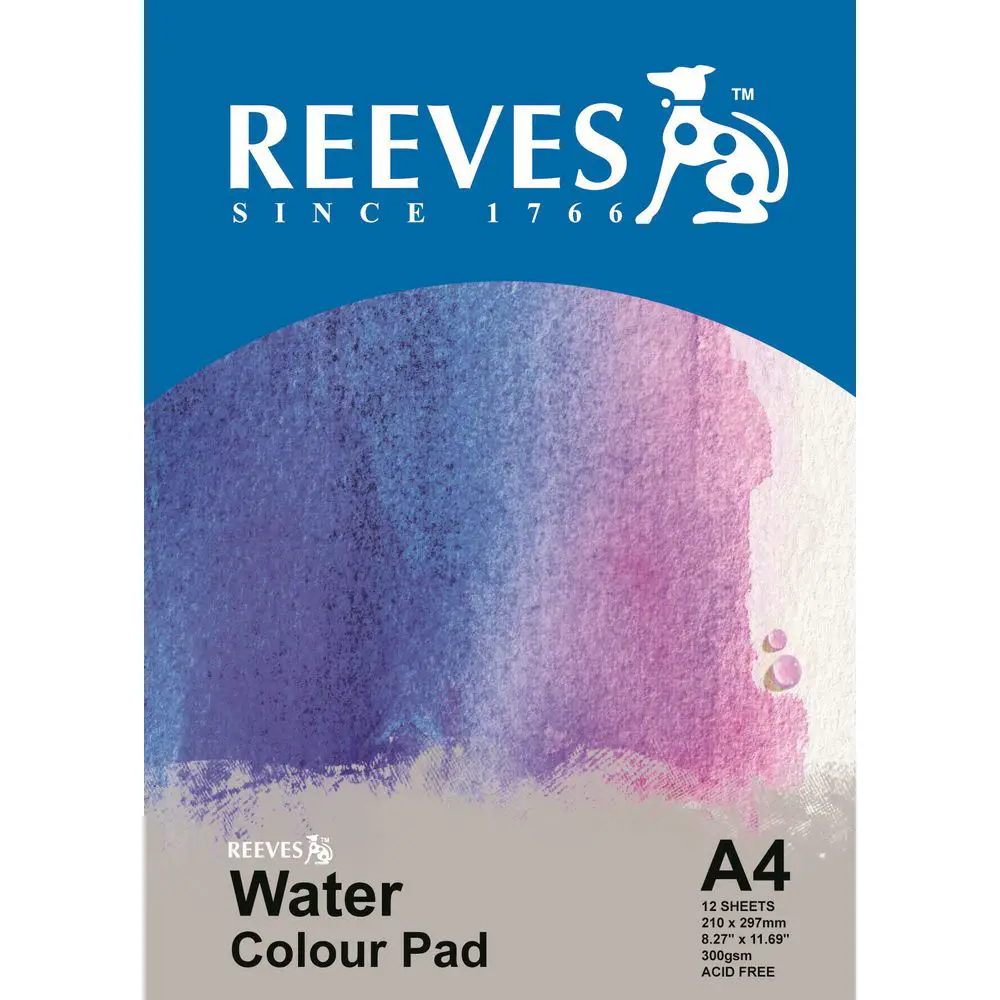
I’ve tried a lot of so – called student grade papers. Some of them were not even particularly cheap. I think Reeves watercolor pads represent great value for money. It’s actually one of the cheaper brands and It’s certainly possible to get great results with it. Wood pulp watercolor papers all have a tendency for pooling and back runs and Reeves is no exception. I was surprised, though at how good this paper is for the money.
If you need some help trying to select appropriate art supplies for your needs I’ve put together a list of my recommended art supplies.
This concludes my post on watercolor paper. Let me know if there’s anything I didn’t discuss that you’d like me to cover in future posts.
